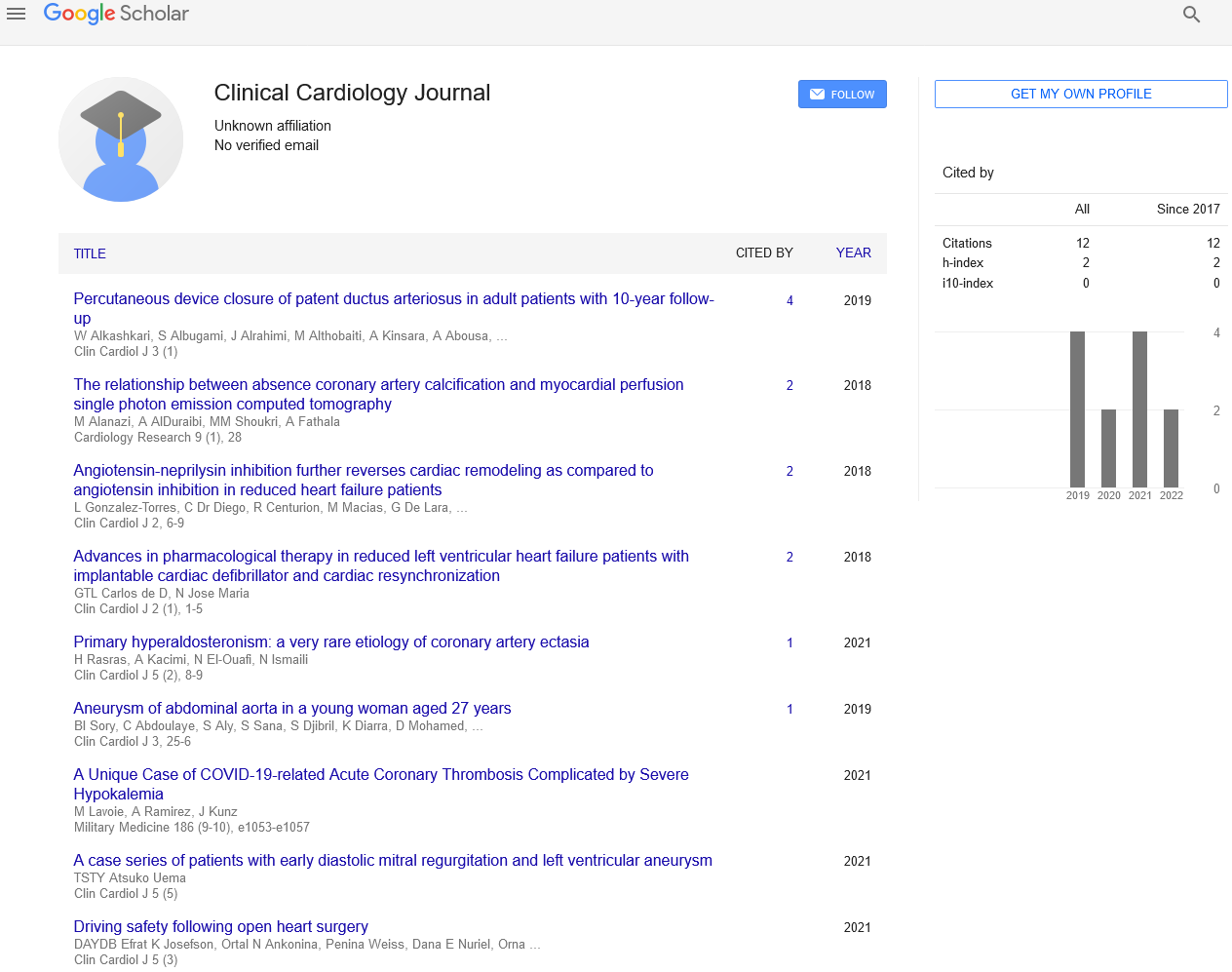A Discussion about Cardiac Surgery
Received: 10-May-2021 Accepted Date: May 15, 2021; Published: 20-May-2021
Citation: Teja A. A Discussion about Cardiac Surgery. Clin Cardiol J 2021;5(3):1.
This open-access article is distributed under the terms of the Creative Commons Attribution Non-Commercial License (CC BY-NC) (http://creativecommons.org/licenses/by-nc/4.0/), which permits reuse, distribution and reproduction of the article, provided that the original work is properly cited and the reuse is restricted to noncommercial purposes. For commercial reuse, contact reprints@pulsus.com
Editorial
For various indications such as left main coronary artery stenosis, extreme triple-vessel disease, angina refractory to medical treatment, or persistent CHF due to ischemia, the Aorto-Coronary Bypass Graft (ACBG) is the most commonly encountered surgical technique. Valve repair or replacement, as well as the repair of congenital or acquired defects (may all be done together with ACBG or separately. The patient is normally placed on "pump" or cardiopulmonary bypass to perform the operation (CPB). The right atrium and aorta are cannulated (and the aorta is later cross-clamped), allowing the entire cardiac output to bypass the patient's heart and lungs. A pump keeps the blood flowing, and the blood is oxygenated by a membrane oxygenator built into the circuit.
During this time, many myocardial preservation strategies are used to protect the heart from ischemic injury. To induce asystole and thereby reduce myocardial metabolism and oxygen intake, a hyperkalemic solution is used to induce cardioplegic arrest. In most cases, the heart is cooled. To reduce peripheral oxygen intake, the patient is normally systemically cooled to 32 degrees Celsius. The perfusionist and anesthesiologist use vasoactive drugs and inotropes to monitor the patient's blood pressure and cardiac production while "on pump." To avoid clotting in the bypass circuit, the patient must be systemically anticoagulated with heparin to an ACT >400 during this period. Long pump periods have been linked to an increased risk of post-operative complications including bleeding.
The activation of a systemic inflammatory response syndrome appears to be linked to CPB (SIRS). It can be difficult to "get him off pump" or free the patient from CPB. That is, to get the heart to contract normally again. To help with "coming off pump," pressors or inotropes are often used. During this time, a number of dysrhythmias, including bradycardias requiri, can occur.
More cases with "beating heart" or "off pump" have been performed in recent years. Off-pump Coronary Artery Bypass (OPCAB) has the advantage of not exposing the patient to the potentially harmful CPB effects. Cross-clamping and cannulation of the aorta are not possible in some aortic root operations. In these cases, the Deep Hypothermic Circulatory Arrest (DHCA) technique may be used. A large dose of barbiturates is given as a neuroprotective agent, and the patient is systemically cooled as much as possible (usually below 28 C). The circulation is then halted for a period of time.





